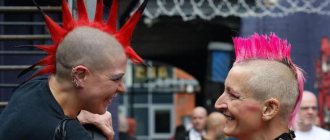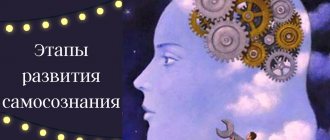Delinquent and deviant behavior are forms of behavior that involve violation of public legal or moral norms. This can be expressed in aggression towards oneself or other people, a tendency to wander, bad habits and mental disorders of varying severity.
Delinquent behavior is a form of deviant behavior that manifests itself in the form of committing illegal actions.
Introduction
The psychology of deviant behavior is an interdisciplinary field of scientific knowledge that studies the mechanisms of occurrence, formation, dynamics and outcomes that deviate from various norms of behavior, as well as methods and techniques for their correction and therapy. Deviant behavior can be based either on psychopathology or without signs of psychopathology.
Society always pays special attention to the problem of human behavior that does not correspond to generally accepted, officially established social norms. In connection with the crisis of society, interest in the problem of deviant behavior has objectively increased, which required a more thorough study of the causes, forms, dynamics of deviant behavior, methods of correction, prevention and rehabilitation.
The subject of the psychology of deviant behavior is deviation from various norms of response, mental states and personality development, leading to maladjustment of a person in society and / or violations of self-actualization and self-acceptance.
Mechanisms and strategies for control and prevention
The primary mechanisms of control over deviant and delinquent behavior are considered to be the actions of the school. The school has the following capabilities:
- free access to teenagers' families, cooperation with parents;
- instilling healthy lifestyle skills in schoolchildren;
- impact on the degree of self-esteem of the student and his aspirations;
- organization of leisure activities for schoolchildren and assistance in finding employment during the summer holidays.
The school has the opportunity to attract specialists to prevent delinquency and crime.
Scheme for the prevention of delinquent behavior
Deviations of human behavior in society are deeply rooted in childhood. That is why raising the younger generation requires special attention. “Healthy individuals form a healthy society!” - this slogan should be the basis of all educational work of the younger generation.
The concept of deviation
In modern conditions there can hardly be a society in which all its members would behave in accordance with general normative requirements. When a person violates norms, rules of behavior, laws, then his behavior, depending on the nature of the violation, is called deviant, deviant, criminal, criminal, etc. Such deviations are very diverse: from skipping school lessons to theft, etc. robbery, murder .
However, different social societies differ from each other in the degree of social deviation. Different social societies may have different numbers of people who fall under the definition of perverts. Also, different societies may have different degrees of deviation itself, that is, the average level of deviation from the social norms of one society may differ from another.
Some actions are considered an offense only in certain societies, others - in all without exception. For example, there is no society that condones the killing of its members or the expropriation of other people's property against their will. However, in many Islamic countries, drinking alcohol is a serious offense. And refusal to drink alcohol under certain circumstances in Russia or France is considered a violation of accepted norms of behavior.
So, deviant behavior is the commission of actions that contradict the norms of social behavior in a particular community. The main types of deviant behavior include, first of all, crime, alcoholism and drug addiction, as well as suicide and prostitution.
If we use a scientific definition, then deviant behavior, deviance (lat. Deviatio - deviation) is:
- an act or actions of a person that do not correspond to officially established or actually established norms and expectations in a given society (social group);
- a social phenomenon expressed in relatively massive and sustainable forms of human activity that do not correspond to officially established or actually established norms and expectations in a given society; In the first meaning - as an individual act - deviant behavior is studied mainly by psychology, pedagogy and other behavioral sciences. In the second sense - as an element of social life - deviance is the subject of sociology and social psychology.
Causes of delinquency
Criminal deviations occur among both children and adults. In both cases, their occurrence is associated with the influence of several factors:
- Psychophysiological. This means the general state of a person’s health, temperament and character, personality type (accentuation in adolescents), the presence of any diseases (somatic, mental).
- Family, or costs of education. For example, traumatic events such as parental divorce, frequent quarrels and conflicts between parents, cruelty towards a child, frequent family moves, etc. In addition, the family’s antisocial lifestyle and its dysfunction have a negative impact. For example, alcoholism or other addiction of one or both parents.
- Socio-economic. An unstable situation in society, crises, unemployment, wars - all this affects a person’s mental state. For example, amid the 2021 pandemic, people’s anxiety and irritability have increased, which is causing fights and conflicts in public transport and shops.
Thus, deviations in behavior and actions are associated with congenital or acquired abnormalities in the functioning of the brain, as well as with socio-psychological characteristics of human development.
Basic theories of deviant behavior
Biological theories
At the end of the last century, Italian psychologist Cesare Lombroso proposed the theory of the inborn criminal. Years of careful observations and measurements in prisons convinced the scientist that the most serious, vicious and persistent criminals (in his opinion, up to a third) are born criminals, that is, underdeveloped people. K. Lombroso was convinced that, due to genetic characteristics, inborn criminals cannot curb their instincts. It is almost impossible to correct these people. Society can only protect itself from them by locking them up. C. Lombroso and his students presented a huge amount of evidence to support their theory. They argued that criminals, as a rule, are more like monkeys, they have an abnormal jaw, a flat nose, a sparse beard, reduced sensitivity to pain, and long arms. But C. Lombroso's mistake was that he did not measure ordinary people. This was done by British physician Charles Goring and found the same physical abnormalities in people who had never been criminals.
However, attempts to create a biological basis for a general theory of crime continued throughout much of the twentieth century. American physician William Sheldon emphasized the importance of studying the structure of the human body to predict its behavior. He believed that a certain body structure meant certain personal qualities. Endomorph - moderately plump with a rounded body; such a person is characterized by sociability and the ability to get along with people. Mesomorph - the body is strong and slim, the person tends to be anxious, active and not very sensitive to pain. The ectomorph is distinguished by its thinness and fragility of body, prone to introspection, and endowed with increased sensitivity and nervousness. W. Sheldon came to the conclusion that people with a mesomorph structure are most prone to deviant behavior and breaking laws.
However, most sociologists and psychologists do not support the idea that the tendency to deviant behavior and commit crimes is rooted in genetics. Recently, biological explanations for deviant behavior have focused on sex chromosome abnormalities. It is known that a normal woman has two chromosomes of type X, and a man has XY. But some people have extra chromosomes, type X or Y. Men who have an extra chromosome, type Y, have severe psychopathy and are characterized by increased deviance. All of them have a relatively low intellectual level.
Walter Gove developed the theory of sex and age factors. As Gove points out, the reality is that most offenses involving serious risk or physical force are committed by young people. The number of such crimes drops sharply after 30 years. The age of those detained for murder, rape and robbery is most often 18-24 years old, in second place is the age group of 13-17 years old, and only in third place is 25-30 years old. Thirty years later, the number of people arrested for such crimes is falling sharply. Both men and women are characterized by a decrease in the number of offenses during the transition from adolescence to adulthood.
Anomie theory
Structural strain theory attributes many dysfunctions to personal frustration. Declining living standards, racial discrimination and many other phenomena can lead to deviant behavior. If a person does not occupy a strong position in society or cannot achieve his goals in a legal way, then sooner or later disappointment and tension arise, the person begins to feel inferior and may use deviant, illegal methods to achieve his goals. Strain theory shows that a person is torn between possibility and desire when desire takes over. This theory also has weaknesses. From her position, it is difficult to explain why people from the rich middle and even upper strata of society commit crimes, why bankers are embezzlers.
Types of deviant behavior
Depending on the ways of interacting with reality and violating certain norms of society, deviant behavior is divided into five types: delinquent, addictive, pathocharacterological, psychopathological and deviant behavior based on hyperactivity.
Delinquent behavior
The type of criminal human behavior is delinquent behavior - deviant behavior in its extreme manifestations is a criminal offense. The differences between delinquent and criminal behavior are rooted in the seriousness of the offenses, the severity of their antisocial nature. Offenses are divided into crimes and misdemeanors. The essence of a misdemeanor is not only that it does not pose a significant social danger, but also that it differs from a crime due to the motives of committing an illegal act.
K.K. Platonov identified the following personality types of criminals:
- determined by corresponding views and habits, an internal urge to repeat crimes;
- the instability of the inner world is determined, a person commits a crime under the influence of prevailing circumstances or others;
- determined by a high level of legal awareness, but a passive attitude towards other violators of legal norms;
- is determined not only by a high level of legal awareness, but also by active opposition or attempts to counteract in violation of legal norms;
- The possibility of only a random crime is determined.
The group of persons with delinquent behavior includes representatives of the second, third and fifth groups. In them, within the framework of a volitional conscious action, due to individual psychological characteristics, the process of predicting the future outcome of an offense is disrupted or blocked.
Such people frivolously, often under the influence of external provocation, commit an illegal act without realizing its consequences. The strength of the incentive for a certain action inhibits the analysis of its negative (including for the person himself) consequences.
Delinquent behavior can manifest itself, for example, in pranks and a desire to have fun. A teenager, out of curiosity and for company, can throw heavy objects (or food) from the balcony at passers-by, receiving satisfaction from the accuracy of hitting the victim. In the form of a prank, a person can call the airport control tower and warn about an alleged bomb planted on the plane. To attract attention to his person (for a bet), a young man can try to climb a TV tower or steal a notebook from a teacher’s bag.
Addictive behavior
Addictive behavior is one of the forms of deviant behavior with the formation of a desire to escape from reality by artificially changing the mental state by taking certain substances or by constantly fixating attention on certain types of activities aimed at developing and maintaining intense emotions. (Ts.P. Korolenko, T.A. Donskikh).
Such a person fails to find in reality those areas of activity that could attract his attention for a long time, captivate him, please him, or cause another significant and pronounced emotional reaction. He finds life uninteresting because of its routine and monotony. He does not accept what is considered normal in society: the need to do something, engage in some activity, observe some traditions and norms accepted in the family or in society. At the same time, addictive activity is selective in nature - in those areas of life that, albeit temporarily, bring satisfaction to a person and pull him out of the world of emotional insensitivity, he can show remarkable activity to achieve the goal.
The following psychological characteristics of persons with addictive forms of behavior are distinguished:
- reduced tolerance to the difficulties of everyday life with good tolerance to crisis situations;
- a hidden inferiority complex combined with outwardly manifested superiority;
- desire to lie;
- the desire to blame others, knowing that they are innocent;
- the desire to evade responsibility when making decisions;
- stereotypes, repetition of behavior;
- addiction;
- anxiety.
At the same time, objectively and subjectively poor tolerance to the difficulties of everyday life, constant reproaches of inability and lack of love for life from loved ones and others form a hidden inferiority complex in dependent individuals. They suffer from being different from others because they cannot live like people. However, such a temporary inferiority complex turns into a hypercompensatory reaction. From low self-esteem, inspired by others, individuals move directly to high self-esteem, bypassing adequate self-esteem. The emergence of a feeling of superiority over others performs a protective psychological function, helping to maintain self-esteem in unfavorable microsocial conditions - conditions of confrontation between the individual and the family or team.
Thus, the main thing in the behavior of an addictive personality is the desire to escape from reality, the fear of an ordinary, boring life filled with obligations and regulations, the tendency to seek transcendental emotional experiences even at the cost of serious risk, and the inability to take responsibility for anything.
Pathocharacterological type of behavior
The pathocharacterological type of deviant behavior is understood as behavior caused by pathological changes in character formed during the process of upbringing. These include so-called personality disorders (psychopathy) and obvious, pronounced accentuations of character.
The most important motivational mechanism is the desire to manipulate and control others. The environment is considered only as tools that should serve to satisfy the needs of a given person. In persons with anacastic and anxious (evasive) personality disorders (psychosthenic psychopathy), pathological self-actualization is expressed in maintaining the usual pattern of actions, avoiding overexertion and stress, unwanted contacts and maintaining personal independence. When such people are faced with others, performing overwhelming tasks due to vulnerability, softness, low stress tolerance, they do not receive positive reinforcement, they feel hurt, persecuted.
Pathocharacterological deviations can also include the so-called neurotic personality development - pathological forms of behavior and reactions that are formed in the process of neurogenesis on the basis of neurotic symptoms and syndromes. Deviation manifests itself in the form of neurotic obsessions and rituals that permeate all human activity. Depending on their clinical manifestations, a person can choose methods of painful confrontation with reality. For example, a person with obsessive rituals may, for a long time and to the detriment of his plans, perform stereotypical actions (opening and closing doors, letting a trolley bus pass, approaching a stop a certain number of times), the purpose of which is to alleviate the state of emotional tension and anxiety.
Psychopathological type of behavior
The psychopathological type of deviant behavior is based on psychopathological symptoms and syndromes, which are manifestations of certain mental illnesses. As a rule, the motives for the behavior of mentally ill people remain unclear until the main signs of mental disorders are discovered. The patient may exhibit deviant behavior due to disturbances in perception - hallucinations or illusions (for example, covering one's ears or listening to something, searching for a non-existent object, talking to oneself), disturbances in thinking (expression, defense and attempts to achieve a set goal based on delusional interpretations of reality, actively limit the scope of their communication with the outside world due to obsessions and fears), commit ridiculous acts or remain inactive for months, make stereotypical pretentious movements or freeze for a long time in a monotonous pose due to violations of volitional activity.
Various pathocharacterological, psychopathological and addictive types of deviant behavior represent self-destructive (self-destructive) behavior. Its essence lies in the fact that the system of human actions is aimed not at development and personal growth, and not at harmonious interaction with reality, but at the destruction of personality. Aggression is directed at oneself (auto-aggression), within the person himself, and reality is viewed as something oppositional, which does not provide the opportunity for a full life and satisfaction of urgent needs. Self-destruction manifests itself in the form of suicidal behavior, drug addiction and alcoholism, and some other types of deviations. Motives for self-destructive behavior include dependence and inability to cope with daily life, pathological changes in character, and psychopathological symptoms and syndromes.
Features of delinquent behavior in adolescents
Deviant and delinquent adults are teenagers who were unable to safely go through the crisis of adolescence. Deviations are common among teenagers. This is due to normative age-related reactions:
- need for separation from parents;
- desire to group with peers;
- finding interests and hobbies;
- craving for imitation;
- reaction of overcompensation and compensation.
Someone is trying to attract the attention of their parents with bad actions. Someone tries to be “cool” and “bad” in order to earn authority among their peers. Other teenagers take the slippery slope “for the company.” However, all this has a common basis - problems in the family and neglect. Children from prosperous families, where the child is cared for, helps him learn healthy ways of socialization and find useful hobbies, and does not become hostage to a deviant or delinquent lifestyle.
Important! Pedagogical neglect, neglect and boredom are the main causes of delinquent and deviant behavior in adolescents.
Thus, adolescent delinquency is associated with natural age-related reactions and hormonal changes that occur during the transition period. For example, some teenagers become involved in criminal gangs and identify themselves with the AUE subculture. This reflects all five reactions that we have considered.
The main feature of delinquent deviations in adolescents is a feeling of impunity. Legal responsibility begins at the age of 16, and in particularly severe cases – at the age of 14. Modern children and their older deviant comrades know this very well. Therefore, the youngest members of criminal gangs are often trusted with the dirtiest work.
In addition, the peculiarities of deviations in adolescents include a lack of understanding of the seriousness and danger of such a lifestyle. Teenagers tend to romanticize delinquency. They imitate action and thriller heroes. In general, they are playing.
Among teenagers, such deviations as running away from home, violation of discipline, alcohol abuse, fights, sexual promiscuity, vagrancy, and vandalism are common.
Interesting! Some psychologists believe that the increase in crime among modern teenagers is associated with the popularization of social networks. Some children want to “hype” by recording and posting fights, thefts, etc. online.
Deviation due to human hyperpathy
Deviations due to human hyperpathy are considered a special type of deviant behavior. In such cases, they talk about manifestations of giftedness, talent, genius in any of a person’s activities. A deviation towards giftedness in one area is often accompanied by deviations in everyday life. Such a person often turns out to be unadapted to everyday, ordinary life. He is unable to correctly understand and evaluate the actions and behavior of other people, he is naive, dependent and unprepared for the difficulties of everyday life. If in delinquent behavior there is a confrontation in interaction with reality, in pathocharacterological and psychopathological behavior there is a painful confrontation, then in behavior associated with hyperpowers there is an ignorance of reality. A person exists in reality (here and now) and at the same time, as it were, lives in his own reality, without thinking about the need for objective reality in which the people around him act. He views the ordinary world as something insignificant, insignificant, and therefore does not take any part in interacting with it, does not develop a style of emotional attitude towards the actions and behavior of others, and accepts any event that occurs with detachment. Forced contacts are perceived by a person with superpowers as optional, temporary and not perceived as significant for his personal development. Outwardly, in everyday life, the actions of such a person may be eccentric. For example, he may not know how to use household appliances or how to perform everyday activities. All his interest is focused on activities related to extraordinary abilities (musical, mathematical, artistic, etc.).
Deviant behavior has the following clinical forms:
- aggression;
- auto-aggression (suicidal behavior);
- abuse of substances that cause a state of altered mental activity (alcoholism, drug addiction, smoking, etc.);
- eating disorder (overeating, starvation);
- abnormalities of sexual behavior;
- excessive psychological hobbies (workaholism, collecting, health paranoia, fanaticism - religious, sports, music, etc.);
- excessive psychopathological hobbies (philosophical intoxication, types of mania - kleptomania, etc.);
- characterological and pathocharacterological reactions (emancipation, grouping, confrontation, etc.);
- communication deviations (autism, hypercommunication, conformism, narcissistic behavior, etc.);
- immoral and immoral behavior;
- unaesthetic behavior.
Each of the clinical forms can be caused by any type of deviant behavior, and sometimes several types of deviant behavior serve as a motive for choosing one form or another.









